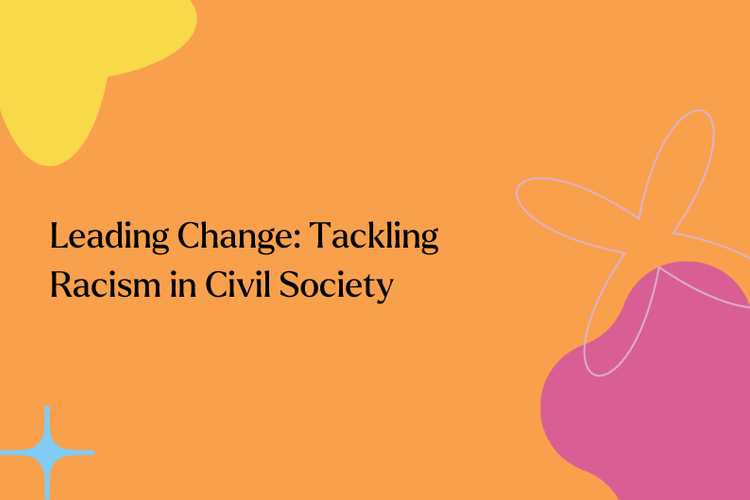
If you’re an HR or EDI professional in the voluntary sector, you’ll know all too well the commercial benefits of diversity of thought and background on trustee boards. But in the midst of a recruitment and retention crisis, how do we attract, recruit – and keep – the right people? Shani Newbold shares Cadence Partners’ tried and tested approaches.
1. Recruitment campaigns that pack a punch
Recruiting is a good time to get your existing board to ‘re-sign’ their emotional contract to be more inclusive, and to role-model that as a representative of your organisation. Only when you’re collectively signed up to and clear on your ‘why’ can you really articulate it externally, and your recruitment campaign is a prime opportunity to do just that. Use it to reinforce your commitment to becoming anti-racist and more inclusive to an audience that includes potential supporters, donors, and partners as well as interested candidates.
This is also true of what you need from this appointment – you know the profile of the people you serve; how do you need that to be mirrored in your candidate? Do they need direct lived experience of the challenges you’re here to address? Or just elements of it? Again, when you’re fully clear on what this looks like, you can create the right campaign messaging to find them.
2. Be proactive
Actively seeking diverse candidates means moving beyond traditional trustee networks in favour of more targeted recruitment strategies. This could involve engaging with diversity-focused professional groups, community networks or social media platforms to reach a wider audience. Think of a wider spectrum of media channels to magnify overall reach. Some of the approaches we’ve used with clients include:
Commissioning research, interviewing industry leaders and bloggers and participating in special interest groups (this is particularly effective for us when working to attract the very best female candidates in dramatically male-dominated industries)
Creating and implementing comprehensive stakeholder engagement plans, including external stakeholders and partners, local branches, members and trustees (this worked particularly well when we worked with the RSPCA)
Building robust partnerships with organisations such as The Conduit and Women on Boards, who have expansive membership networks, as well as key private sector organisations
3. Adapt your trustee recruitment criteria to recognise potential
Rigid trustee recruitment criteria can be a barrier for candidates who lack formal trustee experience but possess valuable transferable skills. Broadening your selection criteria to recognise potential and lived experience, rather than strictly professional qualifications, will help attract strong candidates from minority backgrounds.
Technical experience is of course important, but don’t miss out on people who have those very skills – and amazing connections – but just haven’t had the opportunity to put them into play due to being overlooked.
4. Manage unconscious bias
Strong internal procedures to help mitigate against unconscious bias are a must. At Cadence, we anonymise and randomise role-specific cover letters at the first stage of the evaluation. These are scored against clear, pre-determined criteria on three key areas of enquiry for the cover letter, which we typically co-create with our clients. This means they’re able to gain targeted yet comparable information from the outset. We also ensure two consultants undertake independent review and scoring to create balance.
5. Ongoing support is vital
It can take up to 12 to18 months for new trustees to get fully up to speed, whether or not they’re first-time trustees. But what we find in some sectors is that trustees or senior colleagues are leaving partway through that time frame
We need to be giving – and ensuring other colleagues are giving – a full, 3D brief to trustees on a proactive basis. There are usually six full board meetings in a given year. How are your new trustees feeling as they walk in; fully prepared or like they’re being thrown to the lions?
As well as induction, buddying and mentoring, think about less formal training around your history, current priorities or challenges, acronyms and jargon, as well as key stakeholders and external environment. This the kind of information shared informally over a coffee!
Thinking about the ways in which the running of your board can be made more inclusive and remove any unnecessary barriers is also vital. How do you manage the flow of your board papers, for example? Do they need to be 30 pages long or is that putting people with diverse learning styles at a disadvantage? How long are you giving people to review them and give feedback?
Remember, you’re not on your own...
Amidst all the challenges, we should never lose sight of the fact that you are part of organisations which are doing life-changing work and have justice, equity, diversity and inclusion are at the heart of what you do and why you exist. That's why we purposefully choose to partner with you!
If you’re a hardworking, visionary charitable and third sector colleague reading this, thank you for your tenacity and commitment in the face of mounting financial, operational and societal challenges. I know this is tiring, isolating work but you’re not on your own in this endeavour – there’s a whole host of support from organisations like ACEVO, NCVO and Getting On Board, so please do access it.
Shani has also addressed why diverse trustee boards matter. You can read that here.






















